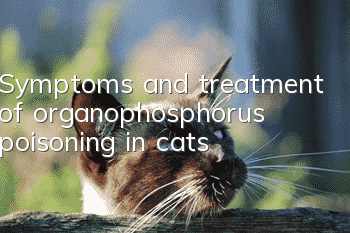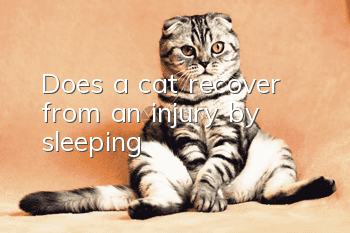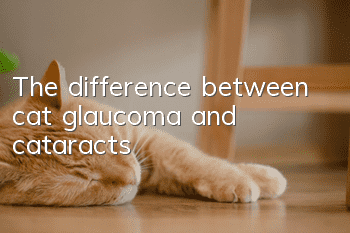Symptoms and treatment of organophosphorus poisoning in cats

Etiology analysis of organophosphorus poisoning in cats
In recent years, in order to kill rat pests in many rural areas, poisonous chemicals such as zinc phosphide have been used on a large scale, killing thousands of rats. However, during this process, there have been many incidents of cats being poisoned and dying from accidentally eating rat poison. So what are the other causes of organophosphorus poisoning in cats? Cause
Organophosphorus compounds can enter cats through the digestive tract, respiratory tract or skin and cause poisoning. For example, if you accidentally eat food with organophosphorus pesticides sprinkled on it, or drink contaminated ground water near the pesticide-spraying area; when preparing or spreading organophosphorus pesticides, the flying powder or liquid droplets will contaminate nearby or downwind kennels and kennels. Food poisoning caused by food licked by dogs, or cats inhaling aerosols containing the above-mentioned agents when training, working or playing downwind; improper use of medicines, such as abusing organophosphorus pesticides to treat ectoparasites, or over-administering trichlorfon to expel them Gastrointestinal parasites; poisoning by bad elements, etc. are all causes of cat poisoning.
Key points for diagnosis of organophosphorus poisoning in cats
The most typical symptoms of organophosphorus poisoning in cats are increased muscle excitability throughout the body, emotional instability, and severe convulsions that the cat cannot control. The duration of poisoning is directly proportional to the amount of intake, and severe cases can be life-threatening.
Diagnosis key points
Due to the different toxicity, intake, poisoning routes and health status of various organophosphorus pesticides, the clinical manifestations and development processes of poisoning are also diverse. However, most cases take an acute course, and sick cats often become ill suddenly within a few hours after inhaling, ingesting, or having their skin contaminated with organophosphorus pesticides. At the beginning of the disease, there is mental excitement and restlessness, and muscle spasms, which usually start from the eyelids and facial muscles, and soon extend to the neck, trunk and even the muscles of the whole body. They can range from tremors to twitching. During myoclonus in the limbs, the sick cat steps frequently. , and make swimming-like movements when lying down. The pupils are constricted and may become linear in severe cases.
Sick cats salivate, have greatly reduced or no appetite, have abdominal pain, have loud and continuous intestinal sounds, constantly pass loose watery stools, and even have incontinence. In the later stages of severe illness, bowel sounds weaken or even disappear. Sweat dripping all over the body, especially around the chest, perineum and scrotum. The body temperature rises and breathing is obviously difficult. The heartbeat was rapid, the pulse was weak, the conjunctiva was cyanotic, and he died of suffocation.
Based on the cause and clinical symptoms, a basic diagnosis can be made.
Treatment of organophosphorus poisoning in cats
It is no surprise that cases of organophosphorus poisoning in cats are not ordinary illnesses. Cats that accidentally eat poisons become ill quickly and have a short course. If they are not treated in time, the mortality rate is very high. Such losses are not worth even money. made up for. Therefore, once you find that your cat has symptoms of poisoning, you must seize the best time for treatment.
TreatmentTreatment
Atropine sulfate should be administered intravenously. The dosage can be 1 mg/kg body weight. If the symptoms are not relieved after 1-2 hours, the medication can be repeated. When the cat develops dry mouth, dilated pupils, stable breathing, and rapid heartbeat, which is the so-called "atropinization", the medication can be stopped. Since atropine cannot resurrect choline esters that have been bound to organophosphorus, it is best to use it in conjunction with pralidoxime iodide and pralidoxime chloride in severe cases.
Pralidoxime iodide (Pam) and pralidoxime chloride (pralidoxime chloride) are cholinesterase reactivating agents. They have a strong phosphophilic effect and can bind the phosphoryl group on cholinesterase. Take it away to restore the hydrolysis ability of the enzyme and at the same time make the organophosphates that enter the body lose their toxicity. Therefore, it is a rescue medicine for acute poisoning by organophosphorus compounds. However, it is less effective against dichlorvos, dimethoate, trichlorfon, malathion and other poisonings and must be used together with atropine. The dosage of pralidoxime iodide is 20 mg/kg body weight for intravenous injection. The dosage of pralidoxime chloride is 20 mg/kg body weight. The reactivation effect of bisphosphonate on cholinesterase activity is better than that of pralidoxime iodide, and it can pass through the blood-brain barrier and has an atropine-like effect. The dosage is 15-30 mg/kg body weight.
- What are the causes of cat hair loss?
- What causes kidney failure in kittens?
- What are the precautions for raising a cat? Ten must-read tips
- What causes cat-to-belly transmission?
- Why is the cat scratching its ears?
- Why do cats like to bring things to their owners?
- Can cats remember someone? How long will it be remembered?
- Himalayan cat food taboos
- How to raise Garfield cat
- How many months does it take for a Maine Coon cat to start losing hair?



